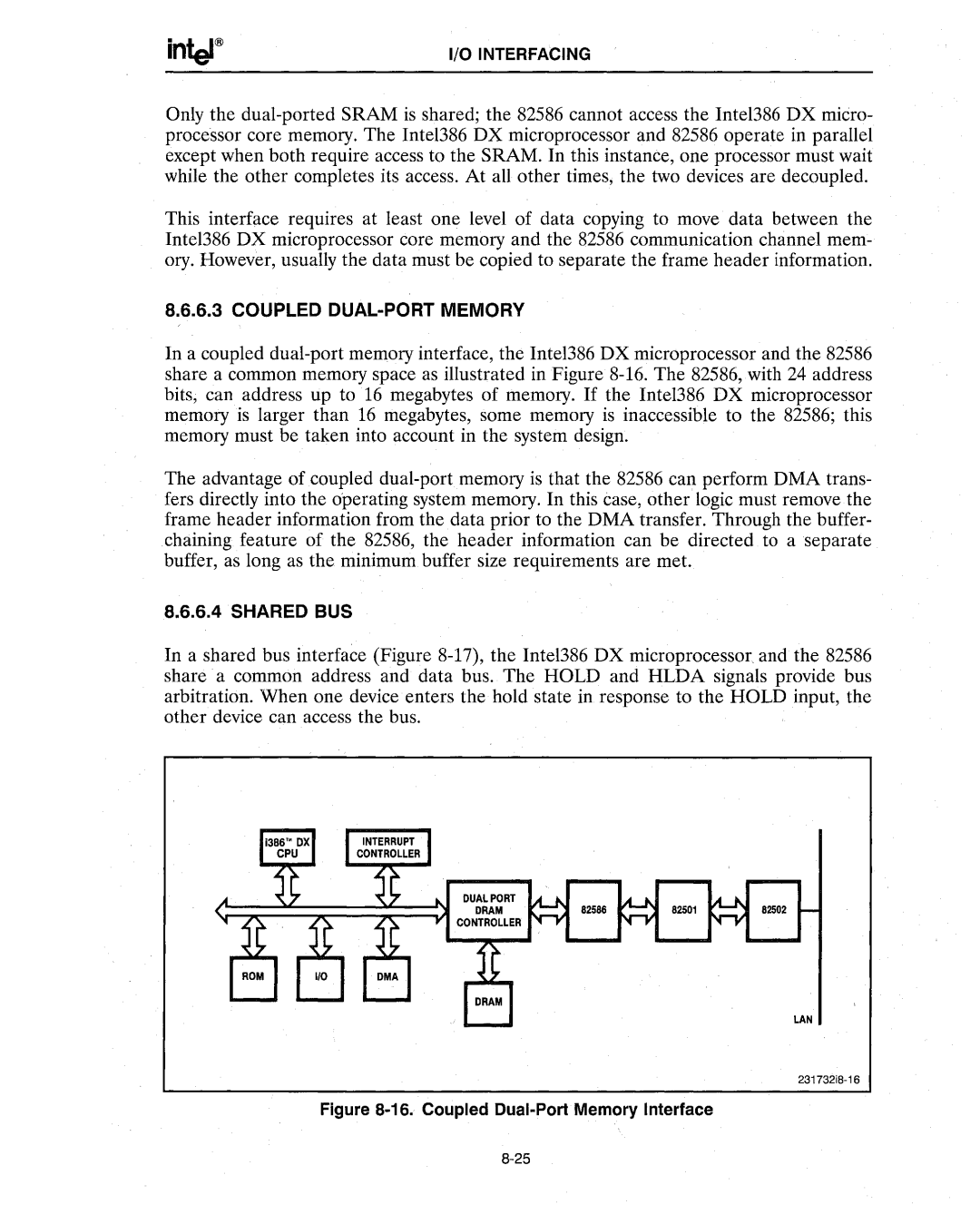I/O INTERFACING
Only the dual-ported SRAM is shared; the 82586 cannot access the Intel386 DX miCro- processor core memory. The Inte1386 DX microprocessor and 82586 operate in parallel except when both require access to the SRAM. In this instance, one processor must wait while the other completes its access. At all other times, the two devices are decoupled.
This interface requires at least one level of data copying to move data between the Inte1386 DX microprocessor core memory and the 82586 communication channel mem~ ory. However, usually the data must be copied to separate the frame header information.
8.6.6.3 COUPLED DUAL-PORT MEMORY
In a coupled dual-port memory interface, the Inte1386 DX microprocessor and the 82586 share a common memory space as illustrated in Figure 8-16. The 82586, with 24 address bits; can address up to 16 megabytes of memory. If the Inte1386 DX microprocessor memory is larger than 16 megabytes, some memory is inaccessible to the 82586; this memory must be taken into account in the system design.
The advantage of coupled dual-port memory is that the 82586 can perform DMA trans- fers directly into the operating system memory. In this case, other logic must remove the frame header information from the data prior to the DMA transfer. Through the buffer- chaining feature of the 82586, the header information can be directed to a separate buffer, as long as the minimum buffer size requirements are met.
8.6.6.4 SHARED BUS
In a shared bus interface (Figure 8-17), the Intel386 DX microprocessor and the 82586 share a common address and data bus. The HOLD and HLDA signals provide bus arbitration. When one device enters the hold state in response to the HOLD input, the
other device can access the bus. | . |
231732i8-16
Figure 8-16. Coupled Dual-Port Memory Interface
8-25

